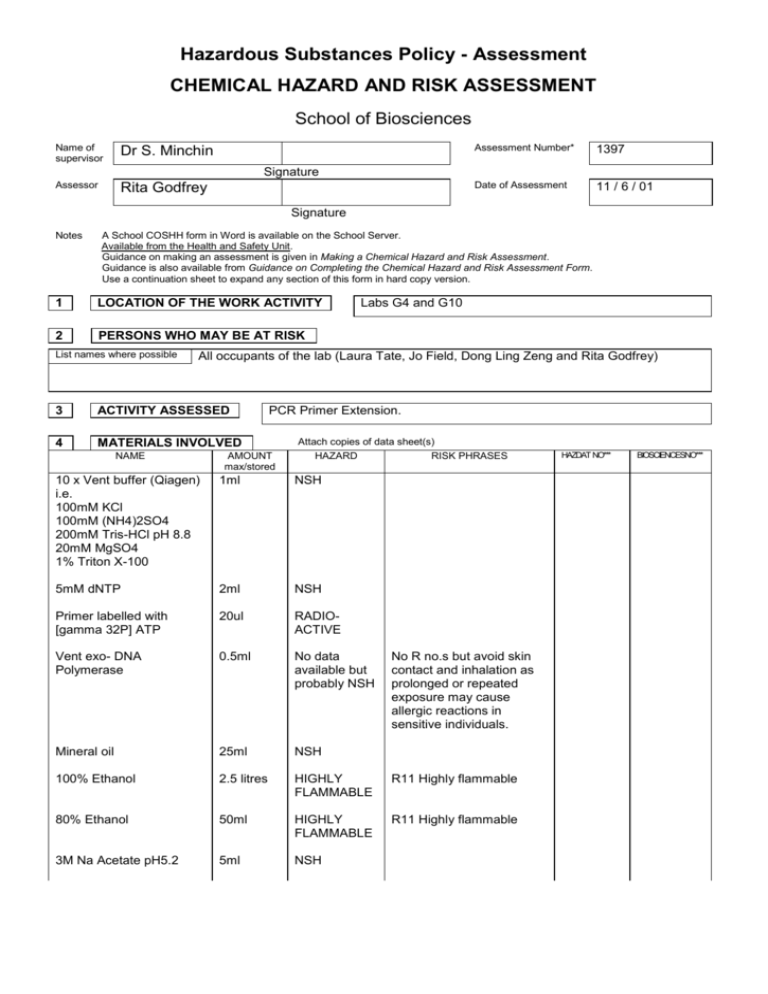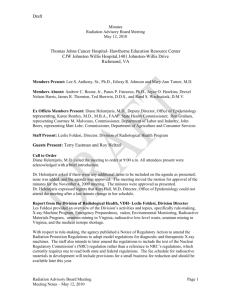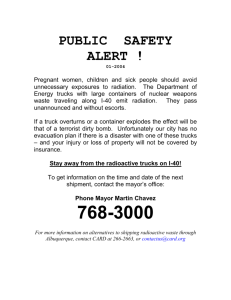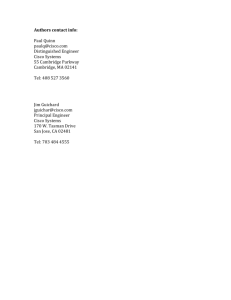PCR Primer Extension. - Academic lab pages
advertisement

10 x Vent buffer (Qiagen) i.e.100mM KCl100mM (NH4)2SO4200mM Tris-HCl pH 8.820mM MgSO41% Triton X-100 5mM dNTP Hazardous Substances Policy - Assessment CHEMICAL HAZARD AND RISK ASSESSMENT School of Biosciences Name of supervisor Dr S. Minchin Assessor Rita Godfrey Assessment Number* 1397 Date of Assessment 11 / 6 / 01 Signature Signature Notes A School COSHH form in Word is available on the School Server. Available from the Health and Safety Unit. Guidance on making an assessment is given in Making a Chemical Hazard and Risk Assessment. Guidance is also available from Guidance on Completing the Chemical Hazard and Risk Assessment Form. Use a continuation sheet to expand any section of this form in hard copy version. 1 LOCATION OF THE WORK ACTIVITY 2 PERSONS WHO MAY BE AT RISK List names where possible Labs G4 and G10 All occupants of the lab (Laura Tate, Jo Field, Dong Ling Zeng and Rita Godfrey) 3 ACTIVITY ASSESSED 4 MATERIALS INVOLVED NAME PCR Primer Extension. AMOUNT max/stored Attach copies of data sheet(s) HAZARD RISK PHRASES 10 x Vent buffer (Qiagen) i.e. 100mM KCl 100mM (NH4)2SO4 200mM Tris-HCl pH 8.8 20mM MgSO4 1% Triton X-100 1ml NSH 5mM dNTP 2ml NSH Primer labelled with [gamma 32P] ATP 20ul RADIOACTIVE Vent exo- DNA Polymerase 0.5ml No data available but probably NSH Mineral oil 25ml NSH 100% Ethanol 2.5 litres HIGHLY FLAMMABLE R11 Highly flammable 80% Ethanol 50ml HIGHLY FLAMMABLE R11 Highly flammable 3M Na Acetate pH5.2 5ml NSH No R no.s but avoid skin contact and inhalation as prolonged or repeated exposure may cause allergic reactions in sensitive individuals. HAZDAT NO*** BIOSCIENCESNO*** DNase Blue i.e 40% Formamide 5M Urea 5mM NaOH 1mM EDTA 0.025% Bromophenol blue 0.025% Xylene cyanol FF 5 5ml TOXIC IRRITANT R61 May cause harm to the unborn child R40 Possible risk of irreversible effects. R36/37/38 Irritating to eyes, respiratory system and skin 261 (form -amide) INTENDED USE** Give brief details and attach protocol/instructions See attached sheet. This assessment does not cover the preparation and use of the gel , for that see assessment number 1529 6 RISKS to HEALTH and SAFETY from INTENDED USE From personal exposure or hazardous reactions. Refer to OELs, flash points, etc., as appropriate. Are pregnant women, breast-feeding mothers especially at risk? There is a risk of exposure to radiation [32P] There is a fire risk from the ethanol. There is a risk of contact with the DNase Blue 7 CONCLUSIONS ABOUT RISKS Is level of risk acceptable? Can risk be prevented or reduced by change of substance/procedure? Are control measures necessary? The radiation and fire risks need to be controlled. The amount of DNase Blue used is very small so the risk is very small but some control is still required. 8 CONTROL MEASURES Additional to Good Chemical Practice Wear protective clothing and gloves throughout. Work behind a perspex screen in lab G4 (“hot lab”) Monitor the work area before and after use. Carry tubes into lab G10 in a perspex box sufficient to contain any radiation. Place the tubes in the PCR machine behind a perspex screen and place a perspex container over the top of the tubes so that there is no risk of radiation exposure from the top of the tubes. Use the screen when removing the samples at the end and transport them to the centrifuge in the pespex container. Work behind the screen when putting the tubes in and taking them out of the centrifuge. Continue using the screen and perspex container until the samples have been loaded onto the gel. Wear gloves when handling DNase Blue and replace the tube cap as soon as possible. Keep the ethanol away from all sources of ignition. This work is covered by the University Radiation Scheme 1/P 9 INSTRUCTION/TRAINING Specify course(s) and/or special arrangements. University radiation safety course 10 MONITORING Performance of control measures, Check integrity of gloves. Check Geiger counter is working properly before use. Personal exposure Radiation film badge Health Surveillance 11 WASTE DISPOSAL PROCEDURE See School Server for Approved Procedure Document on specific Chemical Waste Disposal. Radioactive waste is disposed of according to the University Radiation regulations. Single items up to 1uCi and totalling less than 10uCi should be placed in the low level radioactive waste bin in lab G4. Waste ethanol should be put in the non-halogenated waste solvent bottle. 12 REVIEW Enter the date or circumstances for review of assessment (maximum review interval 5 years) June 2006 13 EMERGENCY ACTION TO CONTROL HAZARDS To stabilize situation eg spread absorbant on liquid spill; eliminate sources of ignition, etc. Switch off all sources of ignition. Mop up with paper towels or spill kit if it is large. If any radioactive components are spilled they should be mopped up with paper towels which are then bagged and placed in the low level waste bin. TO PROTECT PERSONNEL Evacuation, protection for personnel involved in clean-up, Special First Aid Wear protective clothing, gloves and goggles when clearing up the spill. The room should be ventilated until all vapours from ethanol have gone. Clean-up/decontamination TO RENDER SITE OF EMERGENCY SAFE Radioactive spills should be decontaminated with Decon, diluted according to the instructions on the container. When all radiation has been removed (monitor with a Geiger counter) the site can be washed with water. CONTACT Dr S. Minchin PHONE 45438 10.10.00 * ** *** Prefix T is used for Teaching Assessment Number. Please include amount of chemicals used and how. Hazdat No is the UNICOSHH datasheet report number. Biosciences No is the Biosciences data sheet number. UNICOSHH IS A CHEMICAL DATABASE ON THE HEALTH AND SAFETY UNIT SERVER. BIOSCIENCES DATA SHEETS ARE AVAILABLE IN THE SCHOOL SAFETY OFFICE.







